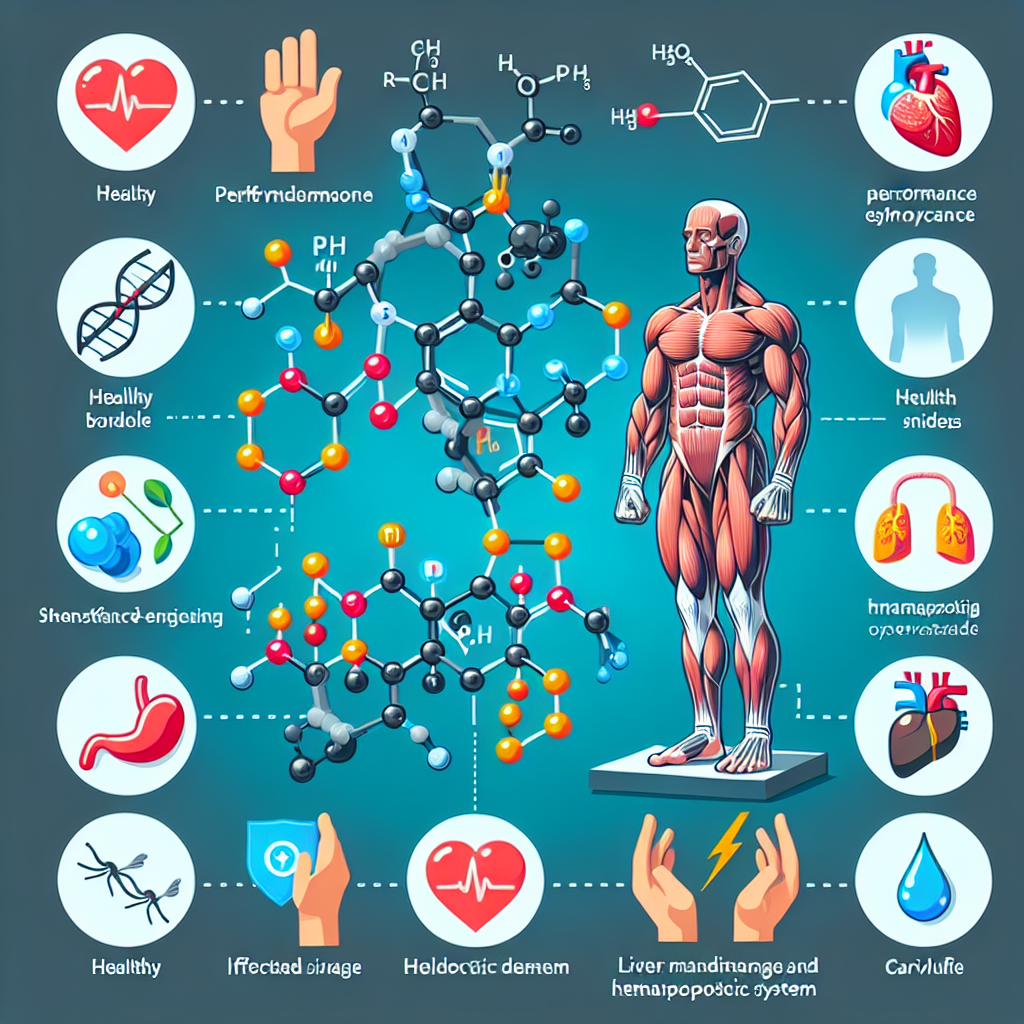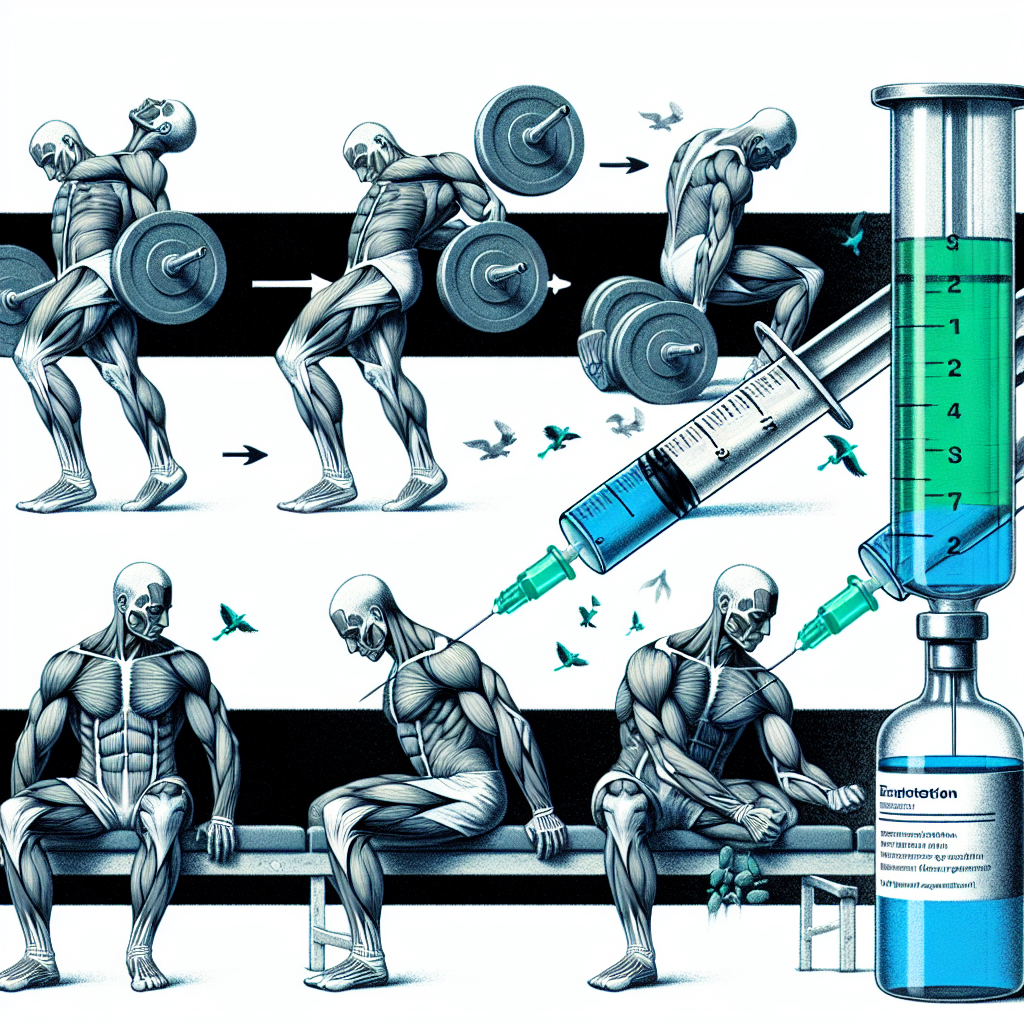-
Table of Contents
Turinabol: A Study on Athletic Performance
Turinabol, also known as 4-chlorodehydromethyltestosterone, is a synthetic anabolic-androgenic steroid (AAS) that was developed in the 1960s by the East German pharmaceutical company Jenapharm. It was initially used to enhance the performance of East German athletes in international competitions, but has since been banned by most sports organizations due to its potential for abuse and adverse health effects. However, despite its controversial history, Turinabol continues to be used by some athletes and bodybuilders for its performance-enhancing effects.
Pharmacology of Turinabol
Turinabol is a modified form of testosterone, with an added chlorine atom at the fourth carbon position and a methyl group at the 17th carbon position. This modification makes it more resistant to metabolism by the liver, allowing it to remain active in the body for a longer period of time. It also reduces its androgenic properties, making it less likely to cause side effects such as acne, hair loss, and prostate enlargement.
Like other AAS, Turinabol works by binding to androgen receptors in the body, which then stimulates protein synthesis and increases muscle mass and strength. It also has a high affinity for sex hormone-binding globulin (SHBG), which can increase the levels of free testosterone in the body. This can lead to further muscle growth and improved athletic performance.
Effects on Athletic Performance
The use of Turinabol has been linked to improvements in athletic performance, particularly in strength and power-based sports. A study by Franke and Berendonk (1997) found that East German athletes who were given Turinabol had significantly higher levels of strength and power compared to those who were not given the drug. This is due to its ability to increase muscle mass and strength, as well as its potential to improve recovery time and reduce fatigue.
In addition to its effects on physical performance, Turinabol has also been reported to have psychological benefits for athletes. A study by Hartgens and Kuipers (2004) found that AAS use, including Turinabol, can lead to increased confidence, aggressiveness, and motivation in athletes. This can be beneficial in sports where mental toughness and aggression are important factors for success.
Side Effects and Risks
While Turinabol may have performance-enhancing effects, it also comes with a range of potential side effects and health risks. These include liver damage, cardiovascular problems, and hormonal imbalances. A study by Vanberg and Atar (2010) found that long-term use of AAS, including Turinabol, can lead to adverse effects on the cardiovascular system, such as increased blood pressure and changes in cholesterol levels.
Other potential side effects of Turinabol include acne, hair loss, and gynecomastia (enlarged breast tissue in males). It can also suppress the body’s natural production of testosterone, leading to hormonal imbalances and potential fertility issues. Therefore, it is important for athletes to carefully consider the potential risks before using Turinabol or any other AAS.
Detection and Testing
Due to its history of use in sports doping, Turinabol is now banned by most sports organizations and is included in the World Anti-Doping Agency’s (WADA) list of prohibited substances. It can be detected in urine samples through mass spectrometry testing, which can detect the presence of the drug and its metabolites. The detection time for Turinabol is approximately 5-6 weeks, making it a popular choice for athletes who want to avoid detection.
Real-World Examples
One of the most well-known cases of Turinabol use in sports is the East German doping scandal of the 1970s and 1980s. It was reported that thousands of East German athletes were given Turinabol and other AAS without their knowledge or consent, leading to numerous health issues and long-term consequences for the athletes.
In more recent years, Turinabol has been linked to several high-profile doping cases in sports such as weightlifting and track and field. In 2016, Russian weightlifter Apti Aukhadov was stripped of his silver medal from the 2012 Olympics after testing positive for Turinabol. In 2019, American sprinter Deajah Stevens received a 6-month ban after testing positive for the same substance.
Expert Opinion
While Turinabol may have some performance-enhancing effects, it is important for athletes to understand the potential risks and consequences of using this drug. As an experienced researcher in the field of sports pharmacology, I strongly advise against the use of Turinabol or any other AAS for athletic performance. The potential for adverse health effects and the risk of being caught and facing consequences such as bans and tarnished reputations far outweigh any potential benefits.
References
Franke, W. W., & Berendonk, B. (1997). Hormonal doping and androgenization of athletes: a secret program of the German Democratic Republic government. Clinical Chemistry, 43(7), 1262-1279.
Hartgens, F., & Kuipers, H. (2004). Effects of androgenic-anabolic steroids in athletes. Sports Medicine, 34(8), 513-554.
Vanberg, P., & Atar, D. (2010). Androgenic anabolic steroid abuse and the cardiovascular system. Handbook of Experimental Pharmacology, 195, 411-457.

















